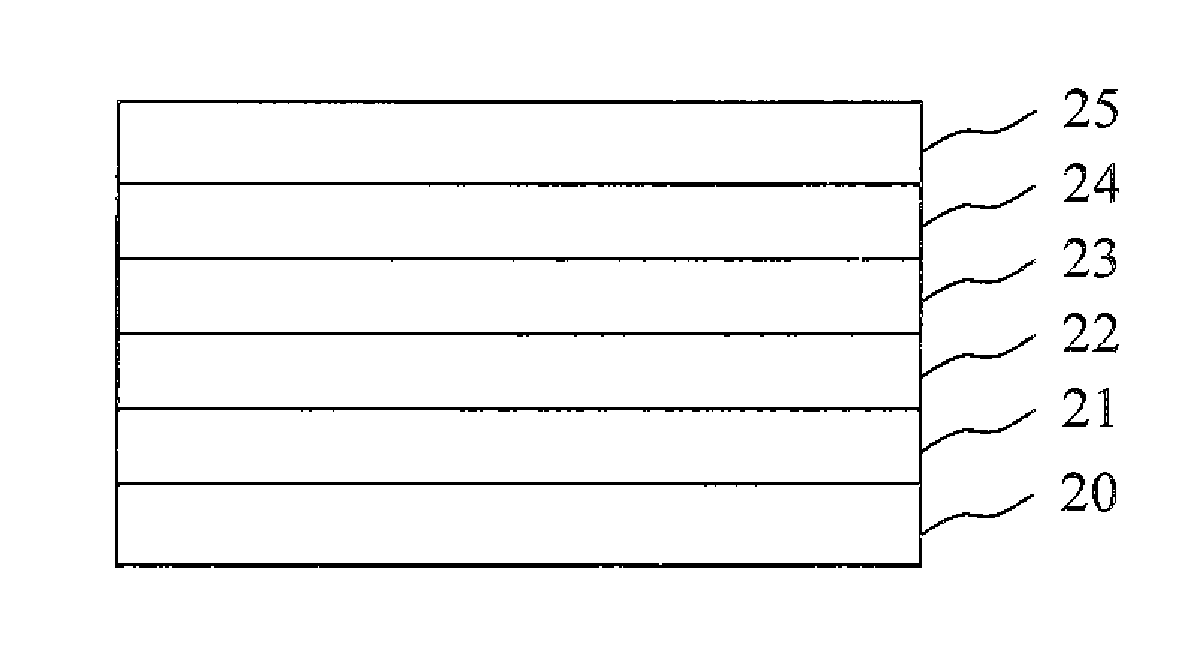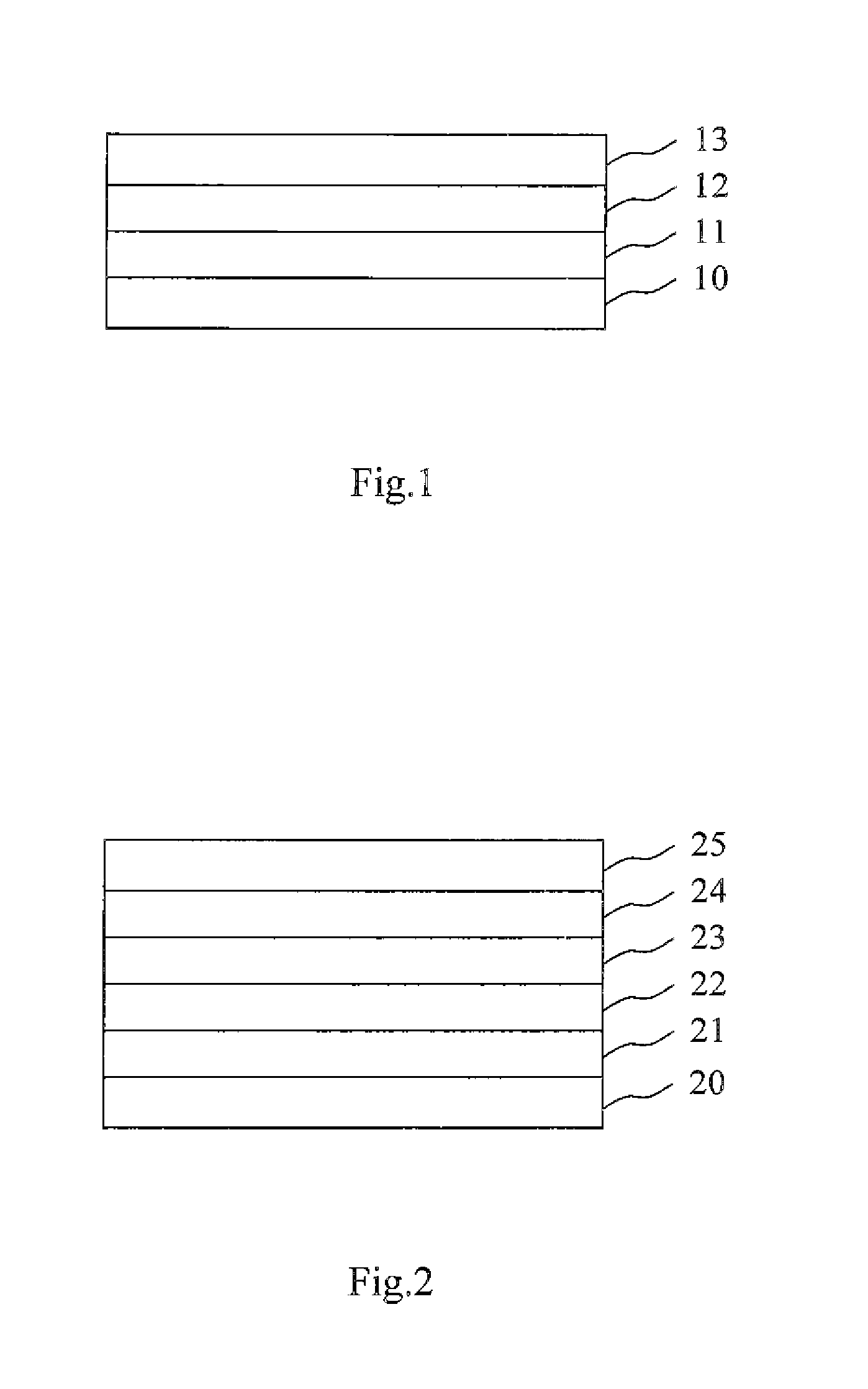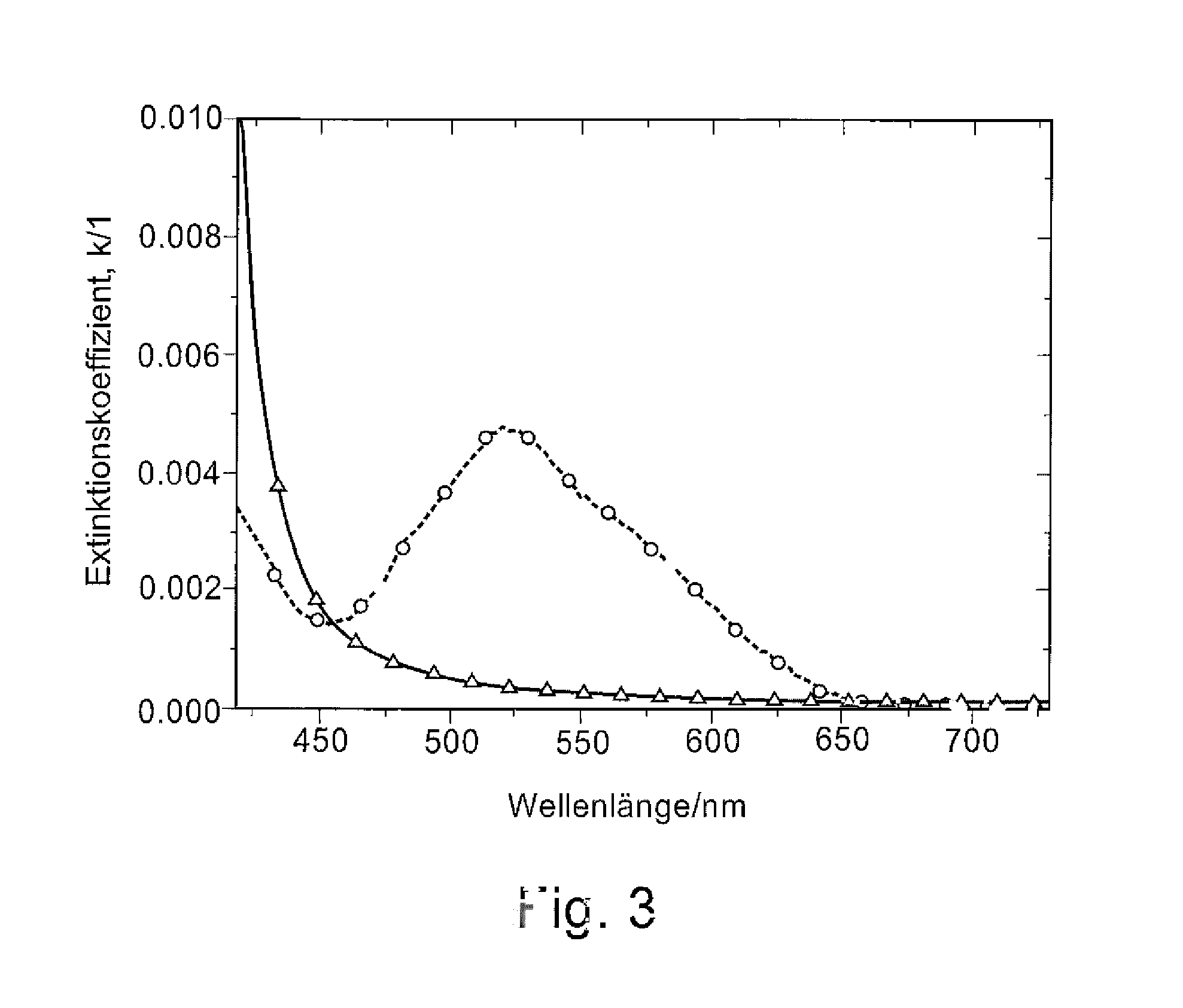N-Doped Semiconducting Material Comprising Phosphine Oxide Matrix and Metal Dopant
a technology of phosphine oxide and metal dopant, which is applied in the direction of organic semiconductor devices, organic chemistry, group 5/15 element organic compounds, etc., can solve the problems of high vacuum conditions, high cost, and difficult handling
- Summary
- Abstract
- Description
- Claims
- Application Information
AI Technical Summary
Benefits of technology
Problems solved by technology
Method used
Image
Examples
synthesis examples
[0121]The synthesis of phosphine oxide ETL matrix compounds is well described in many publications, besides the literature cited at particular compounds listed above and describing typical multistep procedures used for these compounds, the compound E6 was prepared, according to Bull. Chem. Soc. Jpn., 76, 1233-1244 (2003), quite specifically by an anionic rearrangement of the compound E2.
[0122]For the new compounds, however, the typical procedures were used, as exemplified below specifically for the compounds E5 and E8. All synthesis steps were carried out under argon atmosphere. Commercial materials were used without additional purification. Solvents were dried by appropriate means and deaerated by saturation with argon.
synthesis example 1
[1,1′:4′,1″-terphenyl]-3,5-diylbis-diphenylphosphine oxide E5
Step 1: 3,5-dibromo-1,1′:4′,1″-terphenyl
[0123]
[0124]All components (10.00 g (1.0 eq, 50.50 mmol) [1,1′-biphenyl]-4-yl-boronic acid, 23.85 g (1.5 eq, 75.75 mmol) 1,3,5-tribromobenzene, 1.17 g (2.0 mol %, 1.01 mmol) tetrakis(triphenyl phosphine)palladium(0), 10.70 g (2 eq, 101 mmol) sodium carbonate in 50 mL water, 100 mL ethanol and 310 mL toluene) were mixed together and stirred at reflux for 21 hours. The reaction mixture was cooled to room temperature and diluted with 200 mL toluene (three layers appear). The aqueous layer was extracted with 100 mL toluene, the combined organic layers were washed with 200 mL water, dried and evaporated to dryness. The crude material was purified via column chromatography (SiO2, hexane / DCM 4:1 v / v) The combined fractions were evaporated, suspended in hexane and filtered off to give 9.4 g of a white glittering solid (yield 48%, HPLC purity 99.79%).
Step 2: [1,1′:4′,1″-terphenyl]-3,5-diylbis...
synthesis example 2
(9,9-dihexyl-9H-fluorene-2,7-diyl)bis-diphenylphosphine oxide E8
[0128]
[0129]2,7-Dibromo-9,9-dihexylfluorene (5.00 g, 1.0 eq, 10.2 mmol) was placed in a flask and deaerated with argon. Then anhydrous THF (70 mL) was added, and the mixture was cooled to −78° C. 9.7 mL (2.5M solution in hexanes, 2.4 ea, 24.4 mmol) n-butyllithium were then added dropwise; the resulting solution was stirred for 1 h at −78° C., and then progressively warmed to −50° C. After slow addition of pure chlorodiphenylphosphine (4.0 mL, 2.2 eq, 22.4 mmol), the mixture was left to stir overnight till room temperature. MeOH (20 mL) was added to quench the reaction, and the solution was evaporated to dryness. The solid was re-dissolved in DCM (50 mL), H2O2 (30 wt % aqueous solution, 15 mL) was added dropwise, and the mixture left under stirring. After 24 h, the organic phase was separated, washed subsequently with water and brine, dried over MgSO4, and evaporated to dryness. Purification by chromatography (silica, gr...
PUM
| Property | Measurement | Unit |
|---|---|---|
| Nanoscale particle size | aaaaa | aaaaa |
| Nanoscale particle size | aaaaa | aaaaa |
| Boiling point | aaaaa | aaaaa |
Abstract
Description
Claims
Application Information
 Login to View More
Login to View More - R&D
- Intellectual Property
- Life Sciences
- Materials
- Tech Scout
- Unparalleled Data Quality
- Higher Quality Content
- 60% Fewer Hallucinations
Browse by: Latest US Patents, China's latest patents, Technical Efficacy Thesaurus, Application Domain, Technology Topic, Popular Technical Reports.
© 2025 PatSnap. All rights reserved.Legal|Privacy policy|Modern Slavery Act Transparency Statement|Sitemap|About US| Contact US: help@patsnap.com



